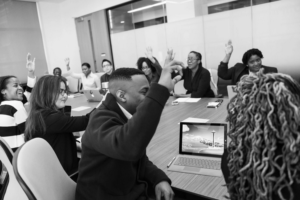
In today’s day and age, diversity is a hot topic. Everyone wants to feel included and respected, but it can be challenging if you’re not surrounded by people who look like you or have the same cultural background as you. As a reference, take a look at the story of angela davis 1972. So, what’s the good news? It’s easier than ever for teachers to create a culture of diversity in their classrooms. If you are a teacher, you can pass on the culture of diversity to your students with these tips here.
Promote Open-Mindedness and Acceptance in Your Classroom
 One of the best ways to create a culture of diversity in your classroom is to promote open-mindedness and acceptance. It means that you should encourage your students to think critically, question their assumptions, and explore new viewpoints. When students are allowed to engage with different perspectives, they are more likely to understand and respect diversity. Exposing students to various viewpoints help them see that there is not just one correct answer to every question.
One of the best ways to create a culture of diversity in your classroom is to promote open-mindedness and acceptance. It means that you should encourage your students to think critically, question their assumptions, and explore new viewpoints. When students are allowed to engage with different perspectives, they are more likely to understand and respect diversity. Exposing students to various viewpoints help them see that there is not just one correct answer to every question.
Include Diversity Topics in Your Teaching Materials
Another great way to promote diversity in your classroom is to include diverse topics in your teaching materials. It could mean incorporating stories and examples from different cultures into your lessons or highlighting diverse perspectives on current events.
Generate Diverse Learning Opportunities
For students to learn about diversity, they need to interact with people from different backgrounds. It means that you should strive to create diverse learning environments in your classroom. You can do this by organizing class projects and activities that require students to work with classmates from different backgrounds. Additionally, you can invite guest speakers into your classroom to share their experiences with diversity.
Tell Some Educational Stories About Diversity
 One of the best ways to help students understand diversity is to share stories about it. It could involve telling personal stories about your own experiences with variety or sharing inspiring stories about people who have overcome adversity. By hearing real-life examples of diversity in action, students are more likely to develop an understanding and appreciation for it.
One of the best ways to help students understand diversity is to share stories about it. It could involve telling personal stories about your own experiences with variety or sharing inspiring stories about people who have overcome adversity. By hearing real-life examples of diversity in action, students are more likely to develop an understanding and appreciation for it.
One story that was worth telling to your students is the story of Angela Davis. Angela Davis is an American political activist, scholar, and author. She was born in Birmingham, Alabama, in 1944. After a successful academic career, she became involved in the Civil Rights Movement. In 1970, she was arrested and charged with conspiracy to murder a U.S. judge. Thanks to her supporters’ efforts, she was eventually acquitted of all charges. Angela Davis has dedicated her life to fighting for social justice and human rights. She is a powerful example of how people can use diversity for good.
Now that you know some tips on creating a culture of diversity in your classroom, it’s time to get started! The best way to make progress is to take small steps and learn new things. You can help your students develop an understanding and appreciation for diversity with a bit of effort.

